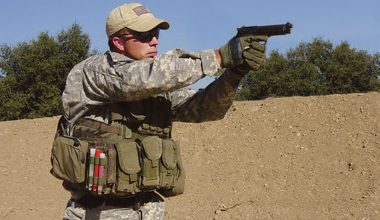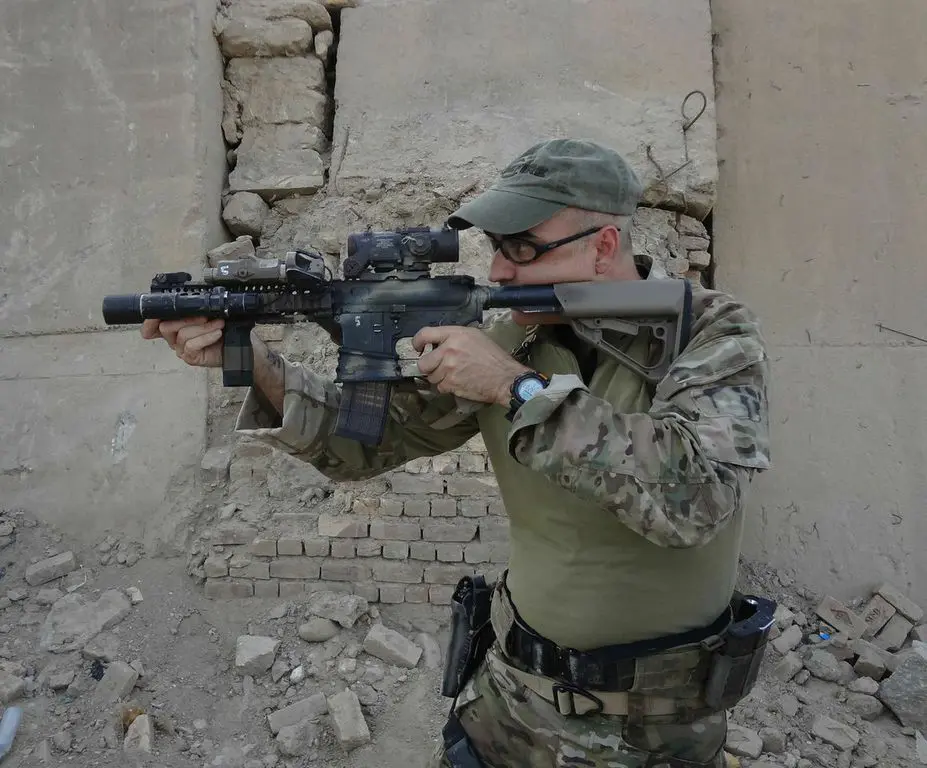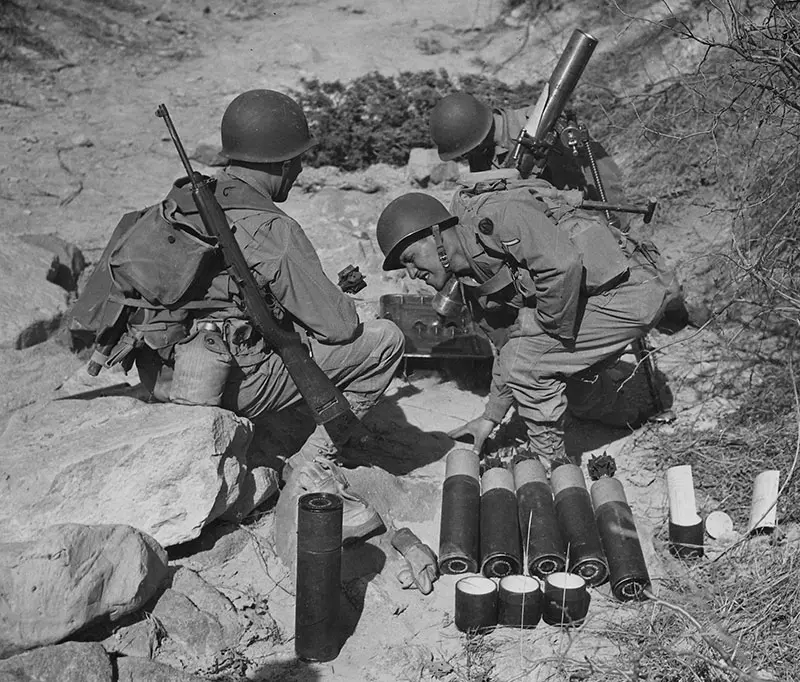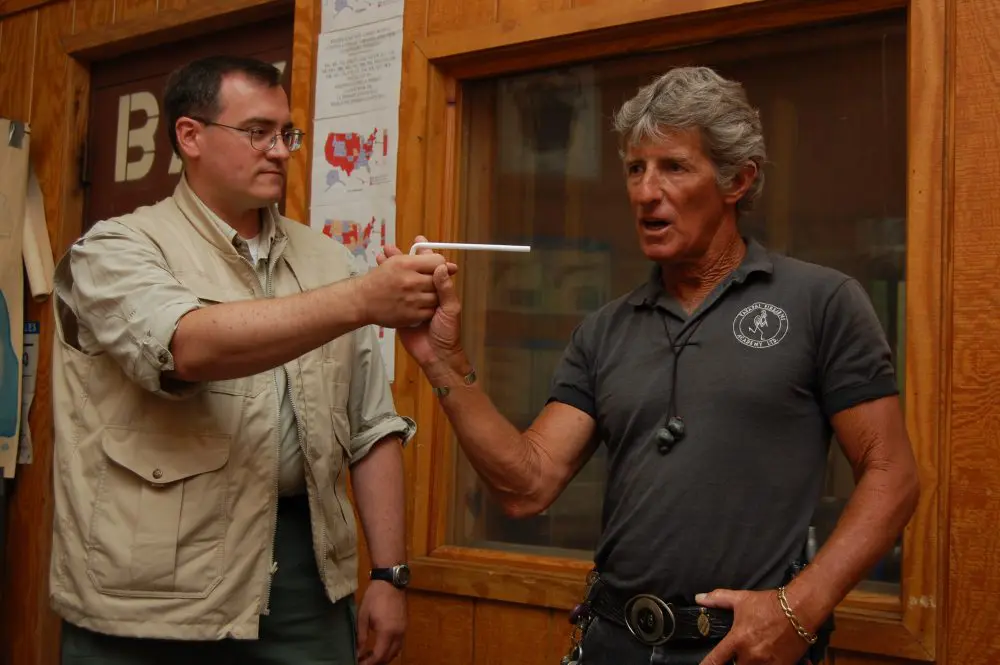
I took the vow not to buy any more AR-15s a couple of years ago. I had enough variants to fit any normal shooting/self-defense needs, plus a couple of extras as test beds for optics, illuminators, etc because I write a lot of tactical articles. However, that was all before I received the FN 15 Military Collector M4.
It is produced by FN to the same specs as their military-contract M4s, with the exceptions of barrel length and select-fire capability. Still, it is about as close to a military-issue M4 as you can get without registering an SBR (Short Barreled Rifle) copy of an M4 with a registered sear—or enlisting.
Features include a 16-inch button-broached barrel with permanently attached A-2 compensator, which gives an appearance similar to a GI M4’s 14.5-inch barrel. Bore and chamber are chrome-lined. Although the FN 15 Military Collector M4 is a semi-auto, its ambidextrous selector switch does show the full-auto setting, albeit it is inoperable.
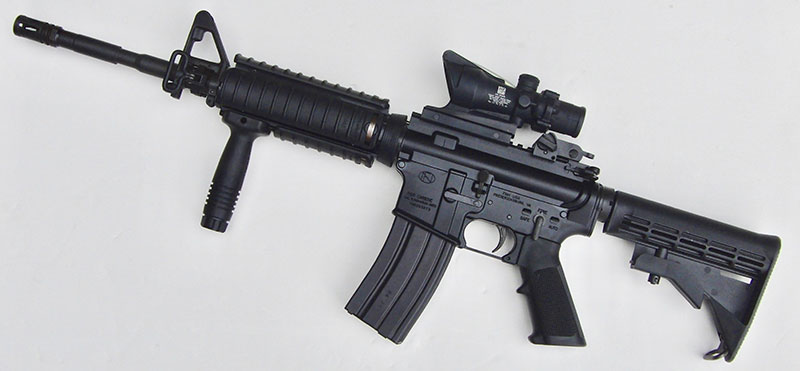
The stock is six-position collapsible with sling mount. An A-2 pistol grip is also of FN’s military M4 type. A MIL-STD-1913 rail allows mounting various optical devices or illuminators/pointers. Handguards are the Knight’s Armament M4 RAS. The FN M4 arrived with a vertical foregrip mounted. As many military M4s have a vertical foregrip, I consider it a nice touch.
I normally consider the foregrip of most use with a select-fire weapon to help control muzzle climb, but I’ve left it on the FN 15 Military Collector M4 for appearance and to practice shooting with it. I do notice that a lot of military users mount the vertical foregrip farther back than it comes on the FN M4. I may experiment with that.
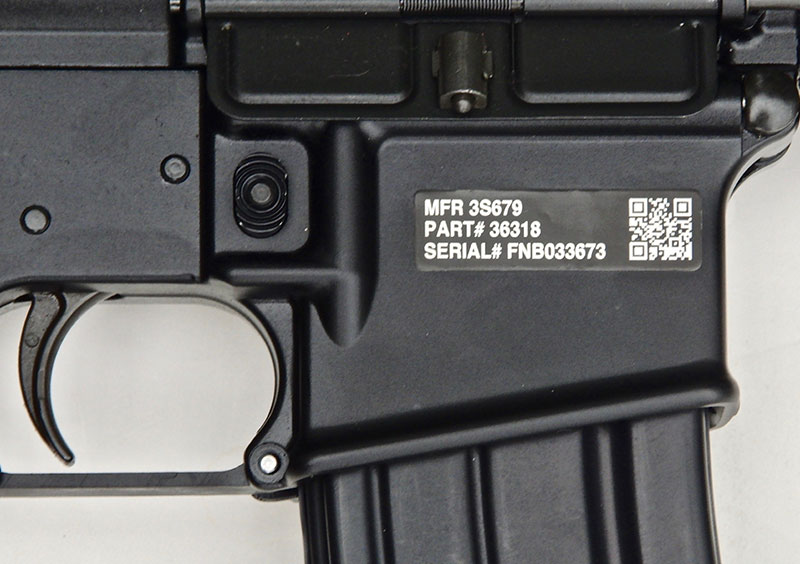
Also mimicking the GI FN M4s is the UID (Unique Identification) Label. I like this feature because it gives the carbine more of a GI-issue appearance. But I should note that the UID on the Military Collector M4 QR (Quick Response aka “bar”) code is for the FN website, while the QR code on a GI M4 is for the applicable manufacturer/government contractor.
Functionally, I don’t scan my weapons in and out of my “armory,” so I don’t need it! Unlike GI M4s, the FN M4 is not marked “Property of U.S. Government.” The FN M4 comes with one FN-marked magazine.
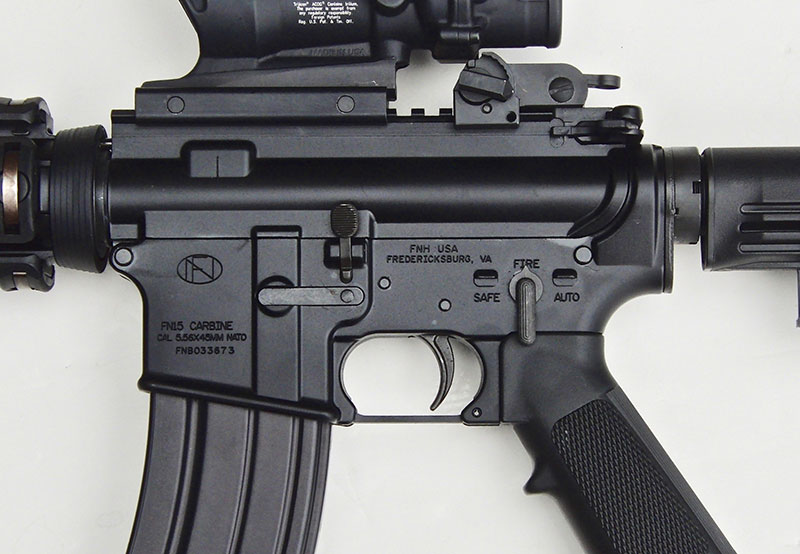
A feature that makes the Military Collector M4 especially appealing is that it really is milspec in production and inspection techniques. The trigger is also milspec, which means the trigger pull is not as good as a couple of my high-end M4s, but it is designed for durability.
The bolt carrier group is milspec and is marked “HP-MPI” indicating it was both high-pressure tested and magnetic particle inspected. This makes the FN M4 more expensive, but I view that as paying for quality.
Inexpensive AR-15s, usually in M4 configuration, are widely available today, which is a good thing. Shooters on a budget can find a functional carbine at an affordable price. In my case, if I’m going to break my vow of “no more AR-15s,” it has to be something special, and I think this FN M4 is.
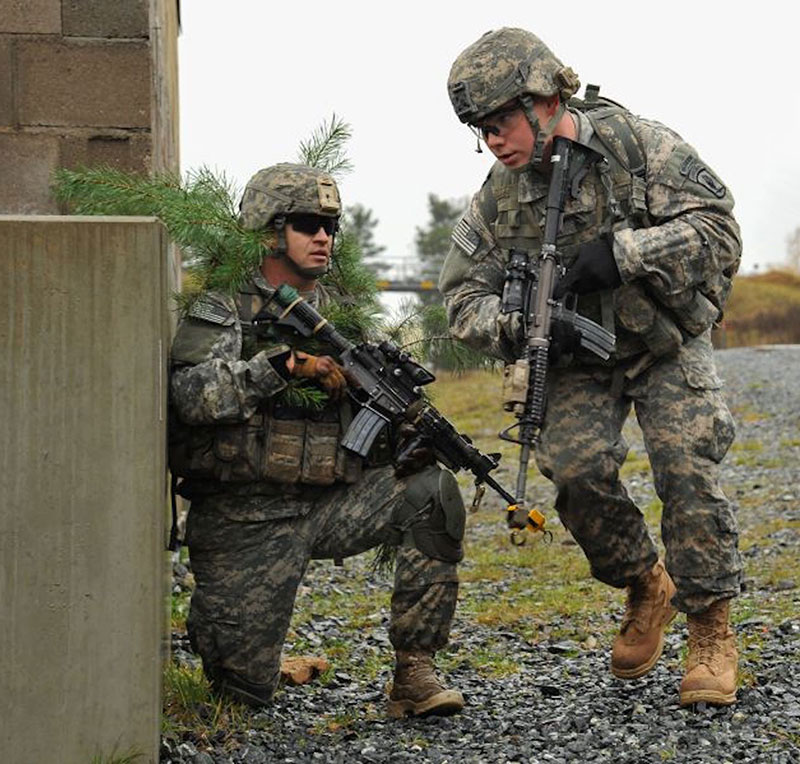
I like the back-up rear sight of the Military Collector M4, which is the Matech flip-up model graduated from 100 to 600 yards. It is designed for use with the front A2-type post. I zeroed the back-up sight when I first got the carbine, as once the Trijicon ACOG I chose was mounted, the sight could not be flipped up. If it were needed, I’d have to remove the optic.
Because I do have M4s that I use for articles about optics, I have one with an Aimpoint mounted. I have another one with the Valdada PitBull mounted. Both of those I also shoot frequently, especially the one with the Aimpoint, to stay familiar with the sights.
For the M4 I often carry in my truck, I have a Trijicon TA31RCO-M4CP mounted, the optical sight used by the USMC. I’ve been using this sight for years, am very confident with it to 300 yards, and can use it to 500 yards if necessary. The reticle has a red chevron.
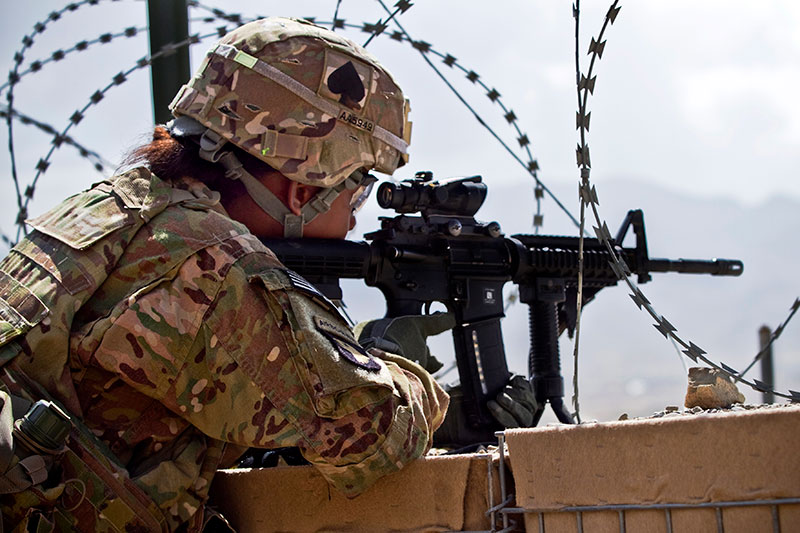
For testing the FN 15 Military Collector M4, I chose the TA31RCO-M150CP-G. This is the Army version of the Marine Corps RCO with green chevron. Its TA51 mount allows precise mounting, but also quick removal if needed.
I like the ACOG for a lot of reasons, a primary one being that it is not necessary to make any manual adjustments for different ranges. By using the chevron and stadia lines, the shooter can quickly adjust the aiming point for range. I’ve shot the ACOG enough that I can do this almost instantaneously to 300 yards and fairly quickly to 500 yards. I also find the chevron lets me quickly acquire a target for CQC when coming up from the ready position.
From the point of view of mounting on the FN M4, the ACOG is widely used by the U.S. armed forces, thus making it especially applicable.
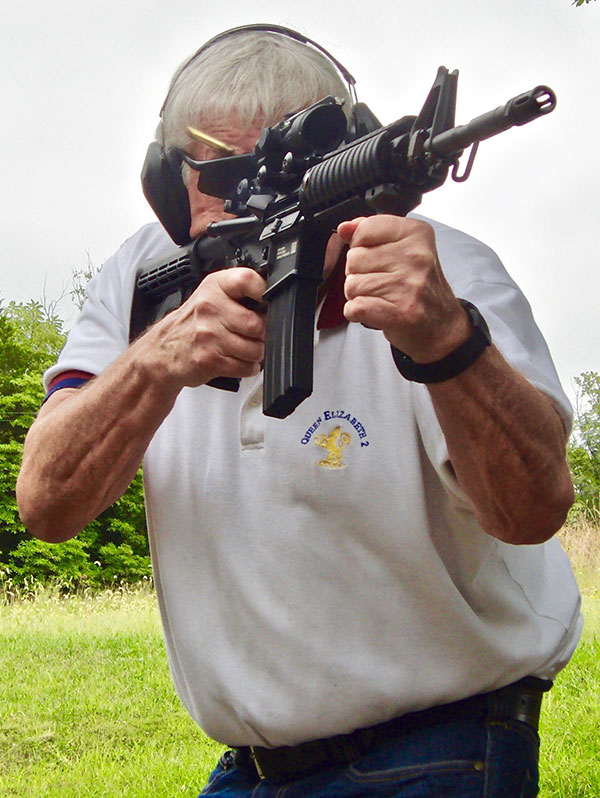
I’ve been using the FN M4 for a couple of months and have put almost 1,000 rounds through it. It has proven reliable. I can’t remember any malfunctions—certainly none that I found noteworthy. I cleaned it after the first 500 rounds and again after firing 100 rounds in testing for this column.
I’ve fired it on paper at 100 and 200 yards. I’ve fired 62-grain American Eagle FMJ, Black Ops 62-grain OTF, Black Hills 60-grain V-Max, and Black Hills 77-grain Sierra MatchKing. At 100 yards, groups ran two to three inches, and five to six inches at 200 yards. Although I have some M4s that shoot better groups, those fired by the FN M4 were good for a military-grade M4.
Sometimes 55-grain M193 ammo actually gives better groups, but I haven’t tried it yet in the FN M4. I have 100 rounds of Lake City M193 overrun earmarked for my next session with the Military Collector M4. Most of the shooting I’ve done with the FN M4 has been with Federal American Eagle 62-grain FMJ.
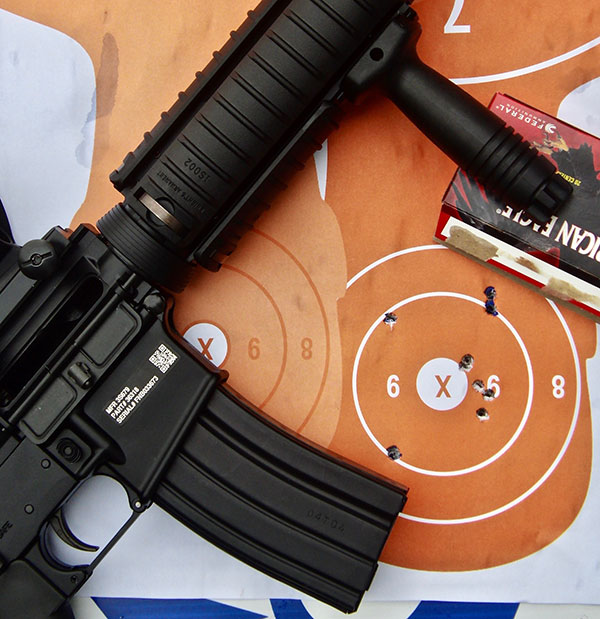
Specifically for this article, I did some shooting on a Son of a Gun hostage target, firing quick double taps at 50 yards coming up from the low ready position. All impacted in the head. The chevron on the RCO ACOG is very quick for this type of shooting. I did not fire on paper at longer ranges for this article, but I did shoot on plates at 100, 200, and 300 yards.
My conclusions: I like the FN 15 Military Collector M4 because it is as close as I can get to a GI-issue AR. I like it because it is of milspec quality. I like it because it is reliable and combat accurate.
Finally, I am going to break my vow and buy just this one more M4!
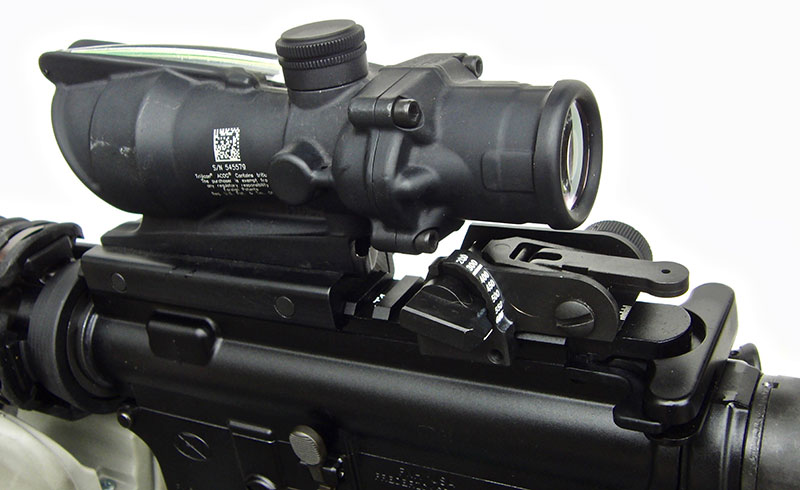
SOURCES
FN AMERICA, LLC
(703) 288-1292
https://fnamerica.com
BLACK HILLS AMMUNITION
(605) 348-5150
www.black-hills.com
FEDERAL PREMIUM AMMUNITION
(800) 379-1732
www.federalpremium.com
SON OF A GUN TARGETS
(864) 313-1449
www.sonofaguntargets.com
TRIJICON, INC.
(800) 338-0563
www.trijicon.com

